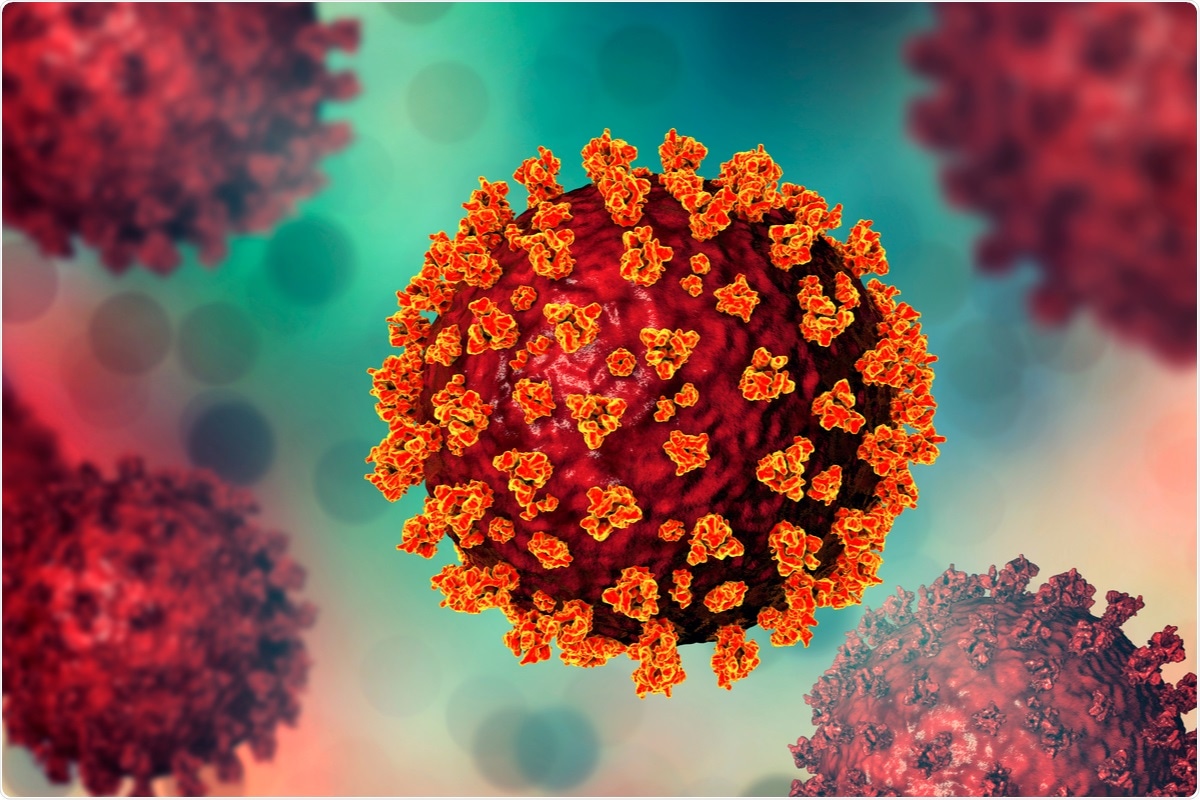Three-dimensional organoid structures grown in the lab allow deeper, almost in situ investigation of a biological system, without the use of living animals. In a paper recently uploaded to the preprint server bioRxiv*, organoids generated from human specimens are utilized to investigate the way in which SARS-CoV-2 interacts with the numerous cells of the intestinal epithelium, finding great heterogeneity in the susceptibility of the organoids and the cells within to infection.
The gastrointestinal tract is a widely recognized target of SARS-CoV-2, second only to the respiratory system, with around 60% of symptomatic patients reporting diarrhea, vomiting, nausea, and other related symptoms. Further, viral RNA can be detected in the intestines and stool during and for a lingering period after infection, often outlasting detectability in the lungs.
Many intestinal epithelial cells strongly express the ACE2 receptor and TMPRSS2 and TMPRSS4, transmembrane proteases that are involved in viral entry following bonding with ACE2. The magnitude of expression of these biomolecules is dependent not only on cell type, but also their relative position within the intestines and other clinical features, along with the demographic of the individual from which they are derived.

The importance of ACE2
Due to this variability, the group assembled small intestine and colonic organoids from 8 and 10 donors, respectively, and report the differing expression levels amongst them. The average rate of ACE2 expression differed little between organoid source: small intestine or colon, though TMPRSS2 and TMRPSS4 expression were greater in the colonic organoids. The enterocyte marker of differentiation APOA1 was also tracked, and found to be decreased in colonic organoids compared with those derived from the small intestine upon infection. No other significant differences were noted based on sex or age, though variation was still great, with ACE2 expression 6.5 times higher in the most greatly expressing organoid than the least.
Upon infection with SARS-CoV-2, this disparity resulted in as much as 423-fold viral RNA being detected in those with the lowest ACE2 expression compared to the most, demonstrating that SARS-CoV-2 infection severity correlates with ACE2 expression level. TMPRSS2, TMPRSS4, and APOA1 expression level did not correlate with SARS-CoV-2 infection severity significantly in comparison, however, suggesting that the expression level of these receptors is a less reliable predictor of infection susceptibility.
The group noted some outliers in the trend between ACE2 expression and SARS-CoV-2 infection, with some cells bearing high levels of the receptor and yet having low levels of viral RNA. Other factors that influence virus entry and replication include intracellular levels of signaling molecules such as interferon.
The group noted no difference in viral burden among cells based on interferon response, nor that ACE2 expression is altered by interferon response. However, a positive correlation between oligoadenylate synthase-like (OASL) protein and virus susceptibility was noted. This could suggest that the enzyme is utilized by SARS-CoV-2 in some way, though further investigation will be required.
The group also shows that SARS-CoV-2 infection influences the cellular antiviral pathway by interference with the interferon response, as widely suggested by other reports. Interferon genes are highly upregulated in the cells most susceptible to infection, presumably in response to higher infection rates. However, other differences include activation of zinc and copper homeostasis genes in low-infection organoids. The group suggests that this could indicate a stress response against viral damage to the epithelium, wherein a particular antiviral pathway has been activated.
These differences in response to viral infection were most noted at the 24 hours post-infection time point, with differences less apparent later, once the virus is already preferentially established in those cells that are most susceptible. The group concludes that SARS-CoV-2 primarily infects mature enterocytes with high ACE2 expression, and has demonstrated that organoids retain the unique transcriptional properties of the donor. These can therefore be used as a platform from which we can gain a greater understanding of SARS-CoV-2 infection.
*Important notice
bioRxiv publishes preliminary scientific reports that are not peer-reviewed and, therefore, should not be regarded as conclusive, guide clinical practice/health-related behavior, or treated as established information.
- Jang et al. (2021) Intestinal organoids expose heterogeneity in SARS-CoV-2 susceptibility. bioRxiv preprint server. doi: https://doi.org/10.1101/2021.07.16.452680, https://www.biorxiv.org/content/10.1101/2021.07.16.452680v1.
Posted in: Medical Science News | Medical Research News | Disease/Infection News | Healthcare News
Tags: ACE2, Cell, Copper, Coronavirus Disease COVID-19, Diarrhea, Enzyme, Gastrointestinal Tract, Genes, Intracellular, Lungs, Nausea, Organoids, Pandemic, Protein, Receptor, Respiratory, RNA, SARS, SARS-CoV-2, Small Intestine, Stress, Virus, Vomiting, Zinc

Written by
Michael Greenwood
Michael graduated from Manchester Metropolitan University with a B.Sc. in Chemistry in 2014, where he majored in organic, inorganic, physical and analytical chemistry. He is currently completing a Ph.D. on the design and production of gold nanoparticles able to act as multimodal anticancer agents, being both drug delivery platforms and radiation dose enhancers.
Source: Read Full Article
